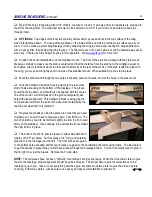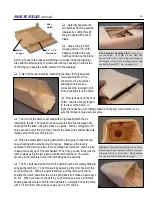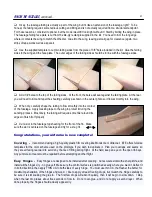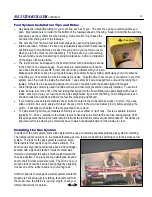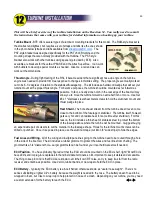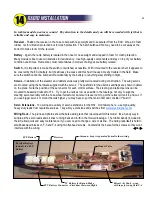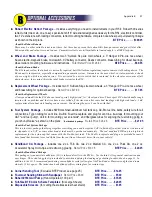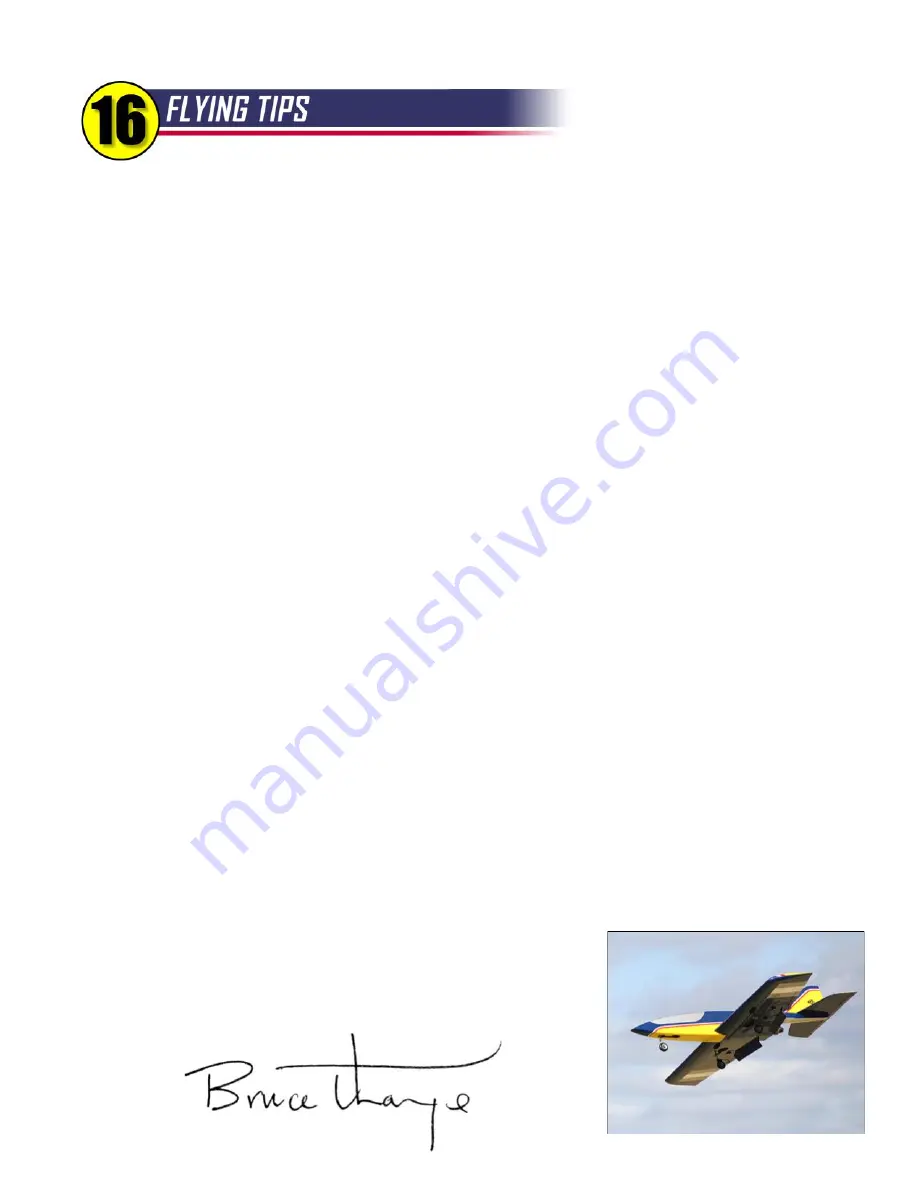
It is hard to describe the feeling you get, standing at the edge of the runway, listening to your turbine spool up and
watching your jet begin to accelerate for its maiden flight. I won't try. For many builders, the R54 will be their first
experience with a turbine. All I can say is take it all in because it's a feeling you won't forget for a long, long time.
If you live in the United States, there are some hoops that you need to jump through. The AMA does provide liability
protection for turbine pilots, but you must obtain a special waiver. The details can be found on the AMA website. To
earn your waiver you basically need to prove that you are a competent pilot by performing a demonstration flight in
front of two experienced turbine pilots, one of whom is a contest director. You can actually do the demo with your
R54, but all of your test flights leading up to the exam must be done on a buddy box. Yes, it is a pain, but I commend
the AMA for working with the jet community and instituting this set of safety regulations. The future of turbine model
flying, and perhaps all R/C modeling, depends on our commitment to safety and personal responsibility.
When you transition from prop planes to turbines, the most noticeable difference is the turbine throttle lag. It will take
some time to get used to this, but the forgiving nature of the R54 will help you get through this learning curve without
difficulty. Due to the relative speed of turbine models and the throttle lag, jet pilots need to be constantly thinking
ahead, particularly during the landing approach. Decide early if you need to go around and don't hesitate to do it.
The R54 is great for short fields, but if this is your first turbine model I strongly suggest that you find a nice long runway
for your initial flights, even if you have to drive an extra hour or two. Once you get a feel for the model’s handling
characteristics, you will be ready to try it from your shorter local sites.
Enough paperwork and warnings - let's fly! There is really nothing tricky about flying the R54. Takeoffs on pavement
typically use up about 150 ft. of runway. Grass runways will obviously require more distance. The R54 climbs out
briskly. Bring the gear up and trim the model for smooth level flight with the throttle at about 2/3 or 3/4. It should be
cruising around at something less than 100 mph. On your maiden flight be sure to climb to altitude, drop the gear and
flaps, and reduce the throttle to 1/2 or less to get a feel for its amazing slow-flying capabilities.
When you are ready to wring her out, you will find the R54 excels at smooth, jet-style aerobatics. The rudder is too
small for snaps or spins, but it is adequate to hold a knife edge clear across the horizon. The R54 is designed for
aerobatics, not speed, so use some common sense when it comes to throttle management. Full throttle should be
reserved for takeoffs, climbing, and the occasional fast pass. If the nose is pointed down, throttle back.
Landings are slow and easy with the R54. The only time I've gotten into trouble is when I've tried to let off the back
pressure on the elevator during final. My best advice for landing is to just let the model slow down at its own pace and
settle onto the runway when it's good and ready. Pretty soon your landings will be so nice that you will begin doing
what very few "heavy jet" pilots dare: touch-and-goes!
When you taxi back, be sure to get one last whiff of that sweet aroma of jet
exhaust before shutting down. I sincerely hope you enjoy the Reaction 54,
both at the building board and at the field. Be sure to send me a photo of
your finished model. Thank You!
34
Summary of Contents for Reaction 54
Page 1: ...INSTRUCTION BOOK...



